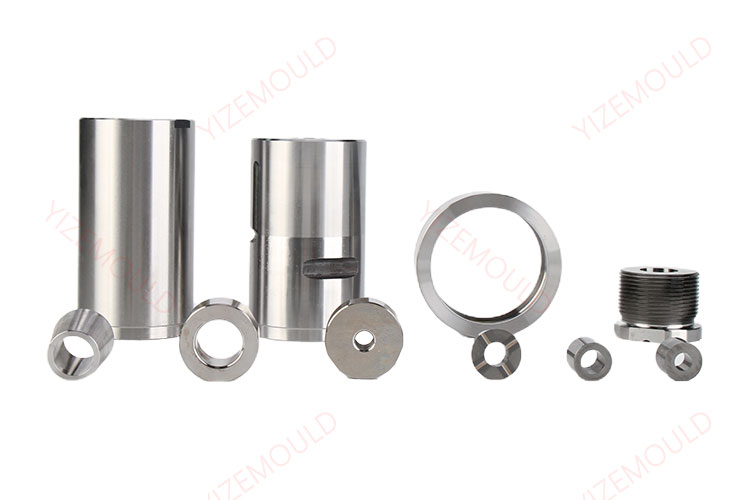Difference between carbide vs tungsten carbide
Tungsten carbide is a type of carbide. However, in the mold or tool industry, when “carbide” is marked on the drawings, it usually refers to tungsten carbide, and if it […]
Tungsten carbide is a type of carbide. However, in the mold or tool industry, when “carbide” is marked on the drawings, it usually refers to tungsten carbide, and if it is another material, it will be clearly indicated.
Properties of Tungsten Carbide
Tungsten carbide has a series of excellent properties such as:
Our factory business: carbide parts, mold parts, medical injection molds, precision injection molds, teflon PFA injection molding, PFA tube fittings. email: [email protected],whatsapp:+8613302615729.
- High hardness
- Wear resistance
- Good strength and toughness
- Heat resistance
- Corrosion resistance
Especially noteworthy is its high hardness and wear resistance, which remain largely unchanged even at temperatures of 500°C and still maintain very high hardness at 1000°C.

Types of Common Carbides
Common carbides can be divided into three categories according to their composition and performance characteristics: tungsten cobalt, tungsten titanium cobalt, and tungsten titanium tantalum (niobium). The most widely used in production are tungsten cobalt and tungsten titanium cobalt carbides.
Tungsten Cobalt Carbides
The main components of tungsten cobalt carbides are tungsten carbide (WC) and cobalt.
Tungsten Titanium Cobalt Carbides
The main components of tungsten titanium cobalt carbides are tungsten carbide (WC), titanium carbide (TiC), and cobalt.
Tungsten Titanium Tantalum (Niobium) Carbides
The main components of tungsten titanium tantalum (niobium) carbides are tungsten carbide (WC), titanium carbide (TiC), tantalum carbide (TaC) or niobium carbide (NbC), and cobalt.
Types of Carbides
Carbides are compounds composed of carbon and a less electronegative element, typically metals or metalloids. They can be classified based on their chemical bonding characteristics. Here are a few common types of carbides:
Salt-like (Ionic) Carbides
These carbides contain highly electropositive metals, such as those from Groups 1 and 2 of the periodic table. Examples of salt-like carbides include:
- Calcium carbide (CaC2), used in the production of acetylene and in the steelmaking industry.
- Sodium carbide (Na2C2), which is similar to calcium carbide.
Covalent Carbides
Covalent carbides have carbon atoms bonded covalently with less electronegative elements. Examples of covalent carbides include:
- Silicon carbide (SiC), known as carborundum, used as an abrasive and in high-strength ceramics.
- Boron carbide (B4C), which is extremely hard and used in bulletproof vests and tank armor.
Interstitial Carbides
Interstitial carbides are formed by transition metals and carbon atoms that fit into the interstitial spaces in the metal’s lattice structure. Examples of interstitial carbides include:
- Tungsten carbide (WC), used in cutting tools and abrasives due to its extreme hardness.
- Titanium carbide (TiC), which improves the hardness of metals in alloys and is used in cutting tools.
- Iron carbides (Fe3C), known as cementite, which is a component of steel.
Metal-rich Carbides
Metal-rich carbides have direct metal-to-metal bonds with carbon atoms inserted in between. An example of a metal-rich carbide is:
- Tantalum hafnium carbide (Ta4HfC5), which is one of the most heat-resistant materials known.
Coordinated Carbides
Coordinated carbides have carbon in the form of carbon monoxide or carbon dioxide, coordinated to a metal center. They are often considered more as complexes than true carbides.
Availability and Applications
The availability of these carbides varies depending on the application and demand in various industries such as metallurgy, tool manufacturing, abrasives, armor production, and electronics. Some carbides are readily available in consumer products, while others are specialized materials used in industrial or scientific applications.
Related articles:






